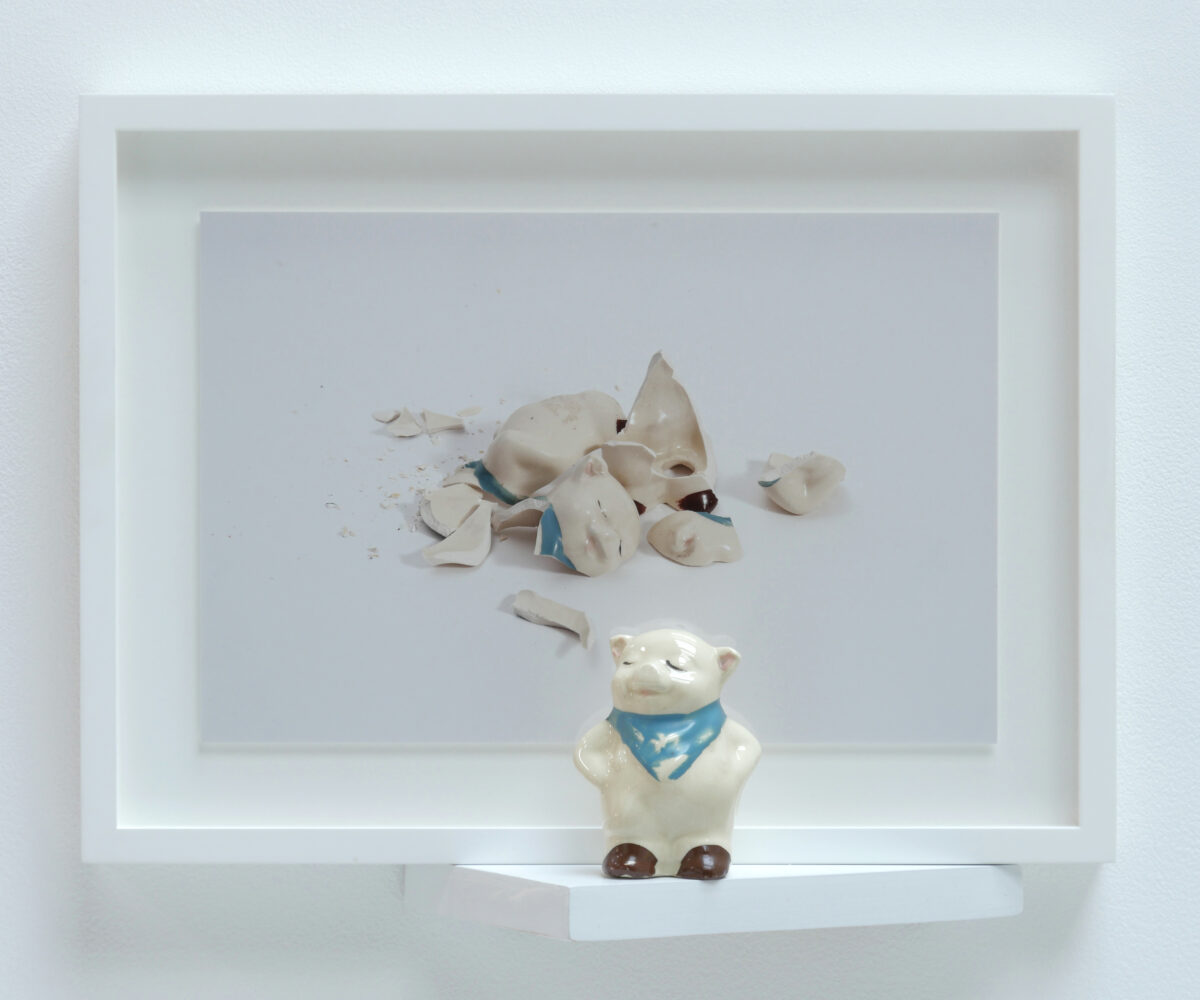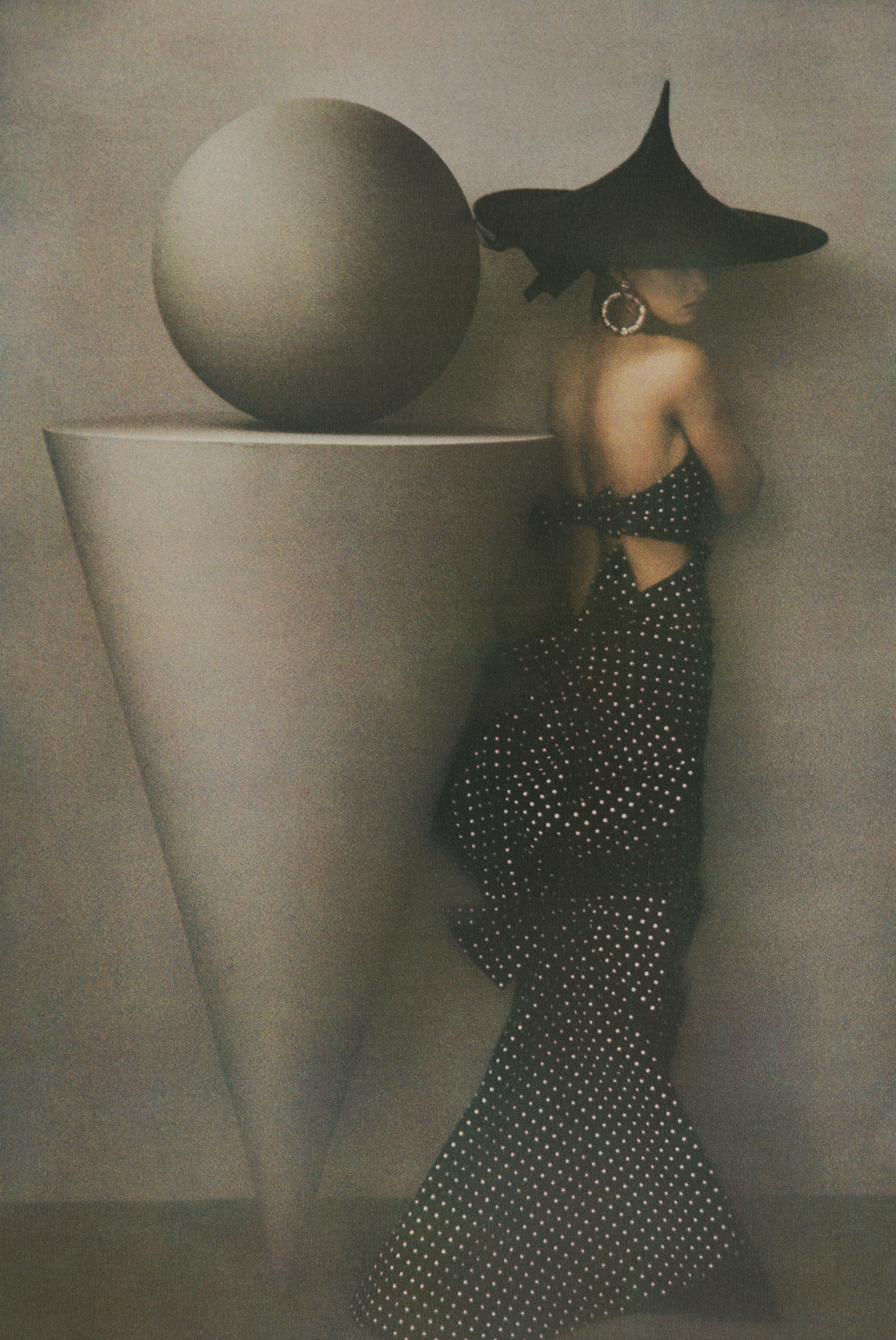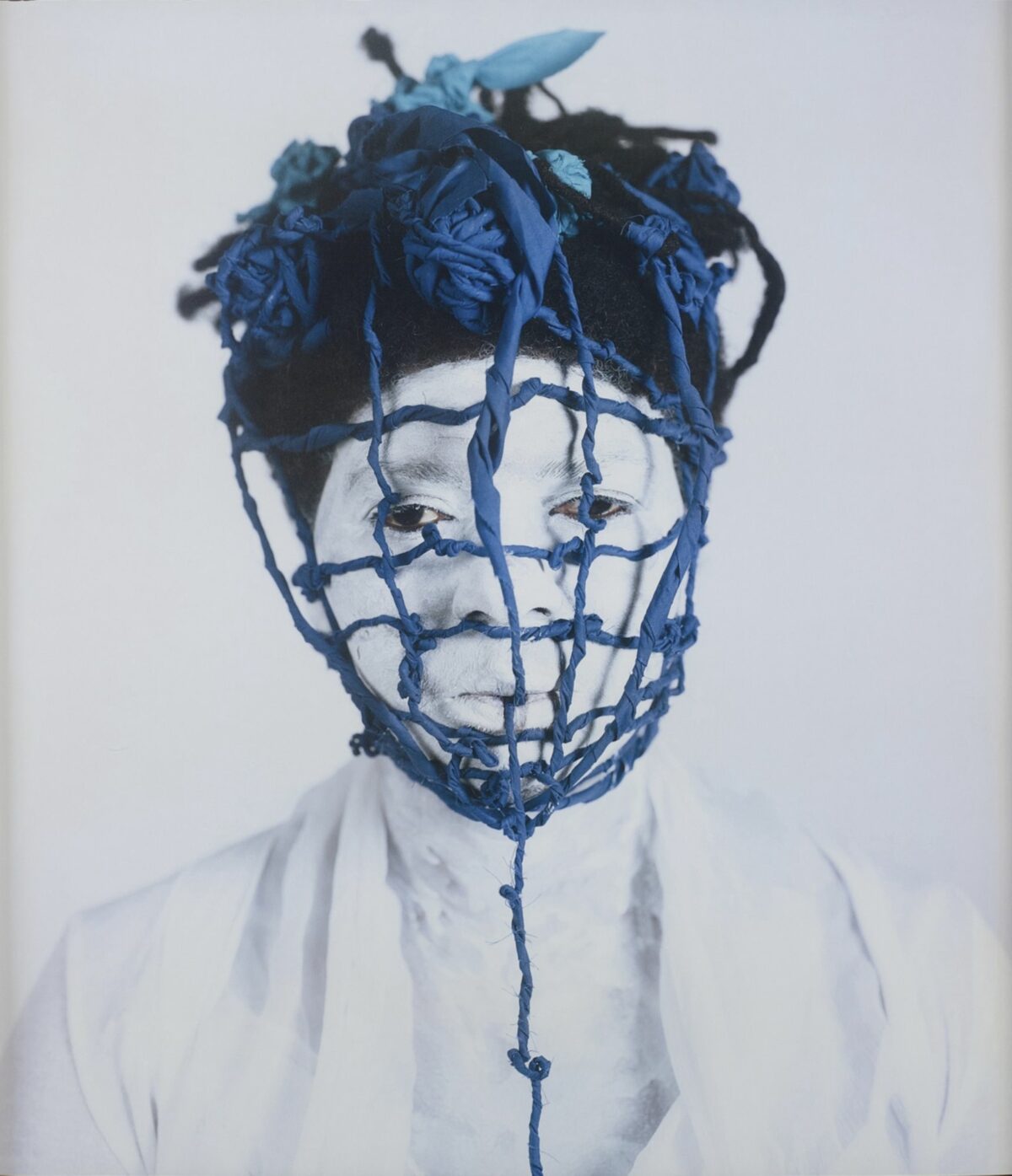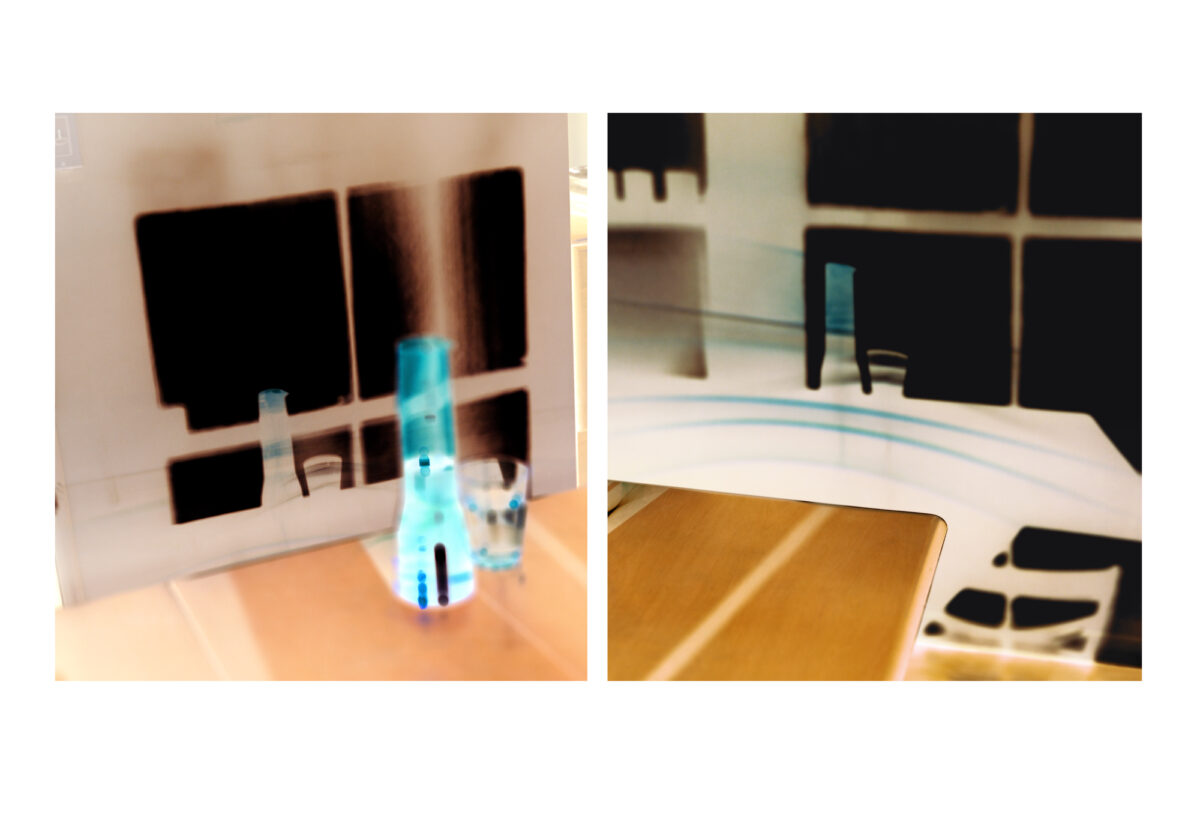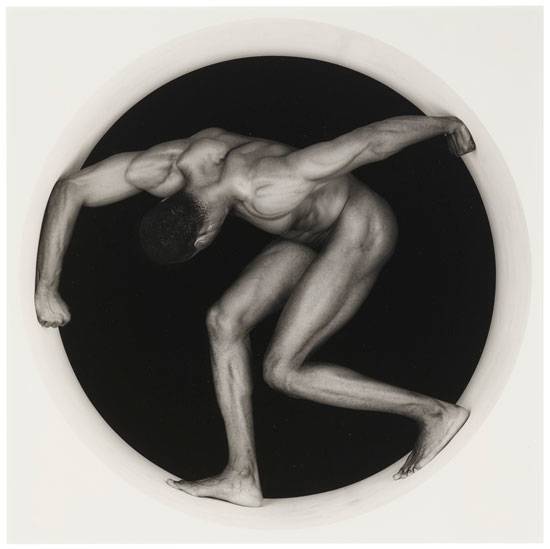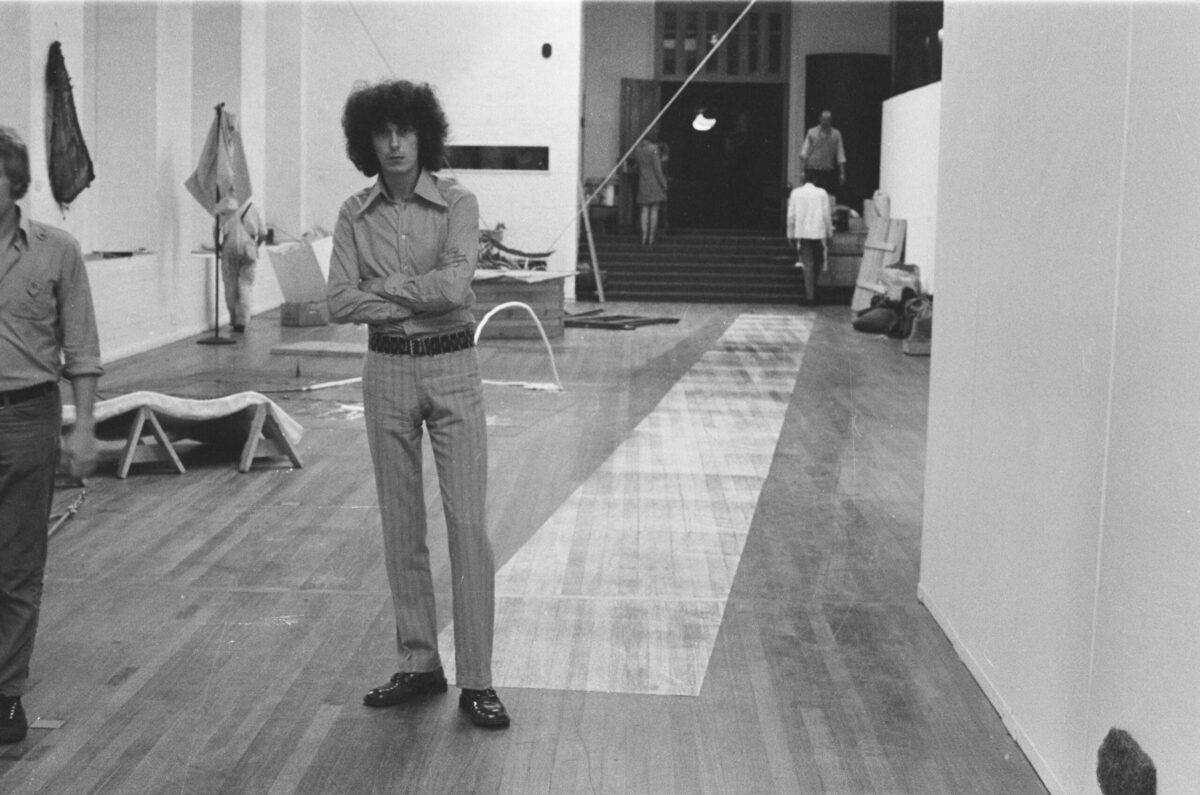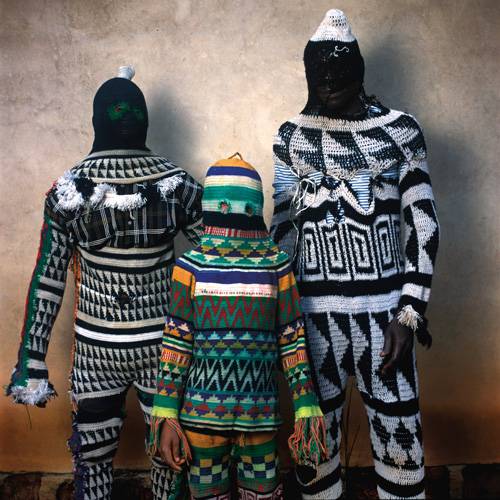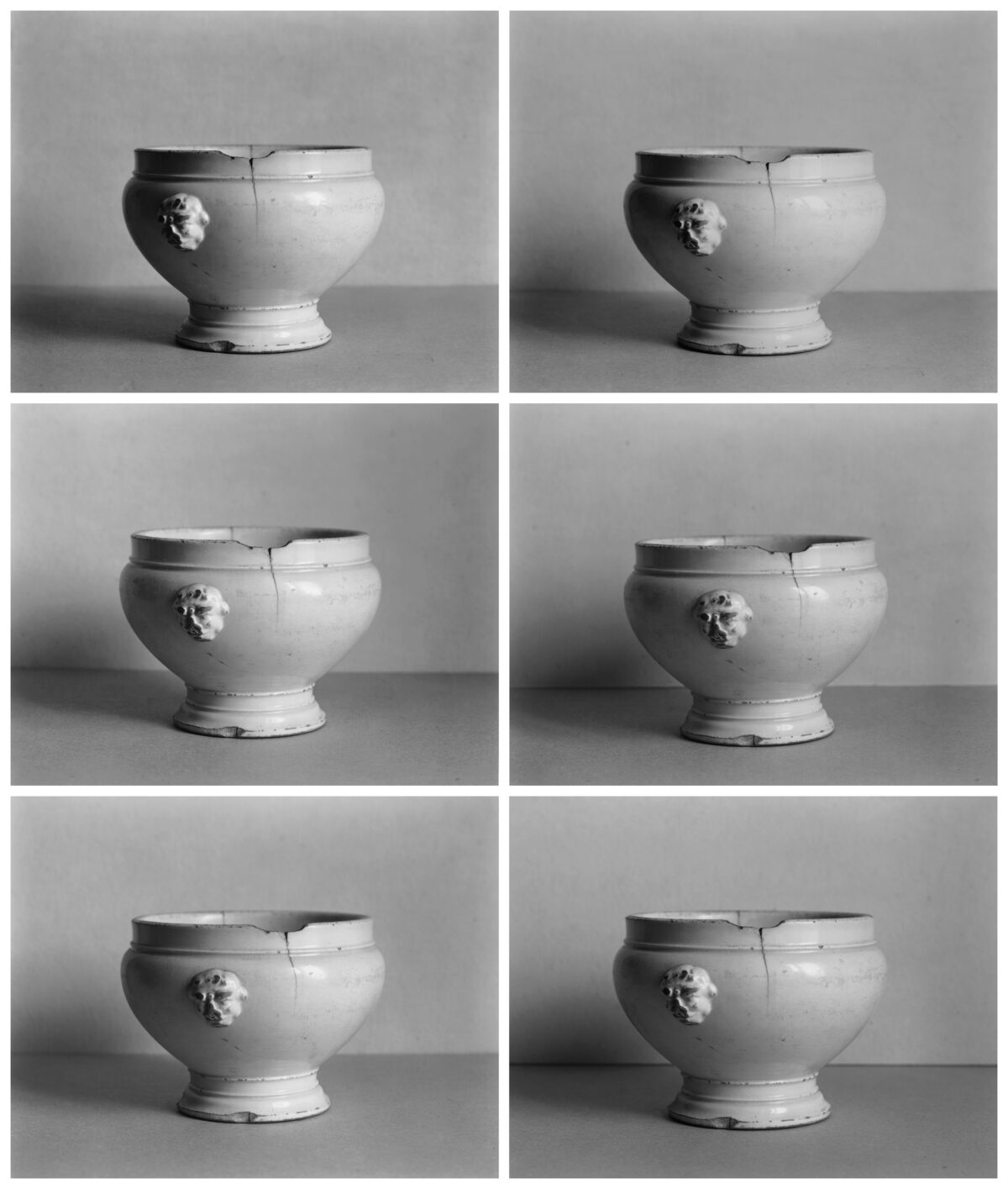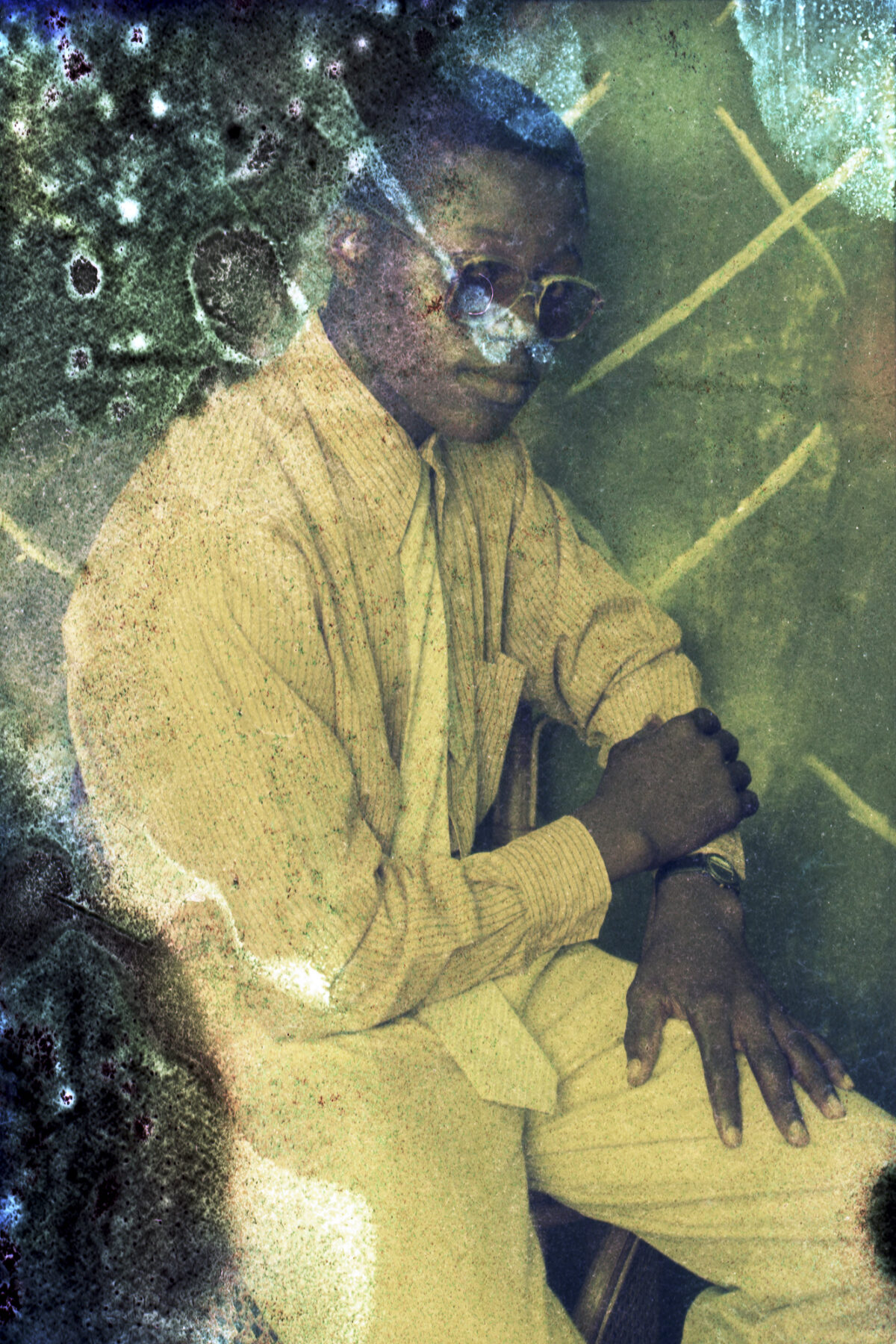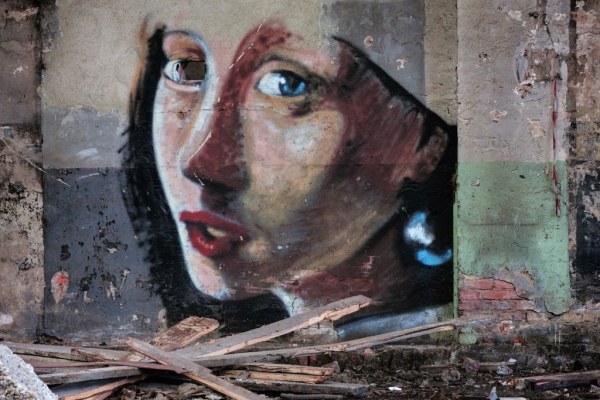

To say that Esko Männikkö’s photographs are about dilapidation and ruin is true, but also a bit misleading. It suggests a certain bleakness, when in fact Männikkö’s subjects are dilapidated in a riotous, effusive way. The mold on the hood of an abandoned car is an efflorescence of mossy blooms; the green peeling paint on a wall behind a tattered red chair is flaking off almost organically, like the room itself is shedding its skin. Time Flies, at Yancey Richardson Gallery through March 14, is less about decay than it is about nature’s ability to reclaim manmade things, to wrap them in its fertile embrace.
Things peel, tear, sink, erode, and rust in spectacular fashion and rich color in Männikkö’s photographs, which nevertheless maintain an almost studied formal symmetry. He frames his subjects, whether a close up of a weathered face carved in marble or a view of a collapsed room, with clear intent. The bowed remnant of a bit of blue drywall in one image of a caved-in room, ceiling sagging and beams askew, or the graffiti version of Vermeer’s Girl with a Pearl Earring on a derelict brick wall, offer glimpses of beauty among the ruins.
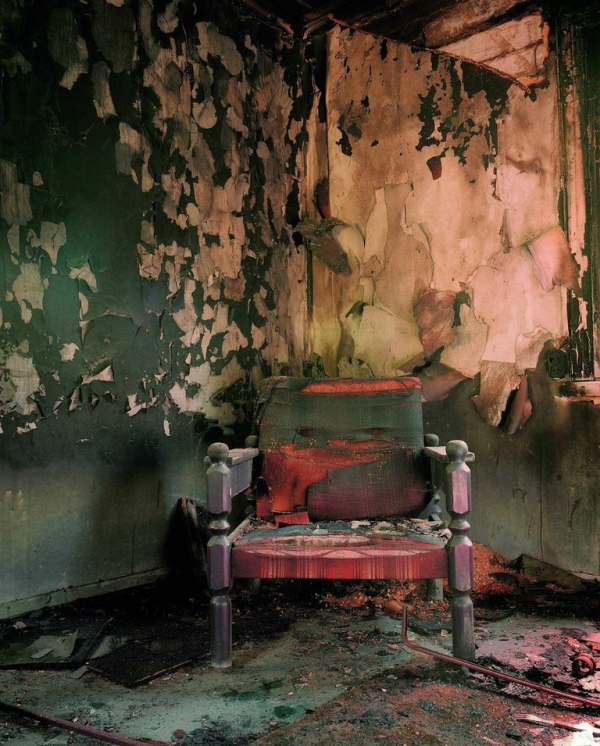

Männikkö’s use of light and color is not unlike that found in Vermeer and his peers. As he has in previous exhibitions, Männikkö mounts his photographs in rough-hewn hand-made wooden frames, which adds to their formality and to their painterly aspects and works against the traditions of social documentary photography. Although his photographs are rooted in the materiality of his subjects, they have plenty of metaphoric potential as well. Several works on view are from his series Blues Brothers, photographs of memorial statuary in which the faces of the deceased are partially eroded or disfigured by oxidation or weathering. It’s hard not to read into those images a message about the vanity of leaving a lasting mark and the folly of thinking anything lasts.

